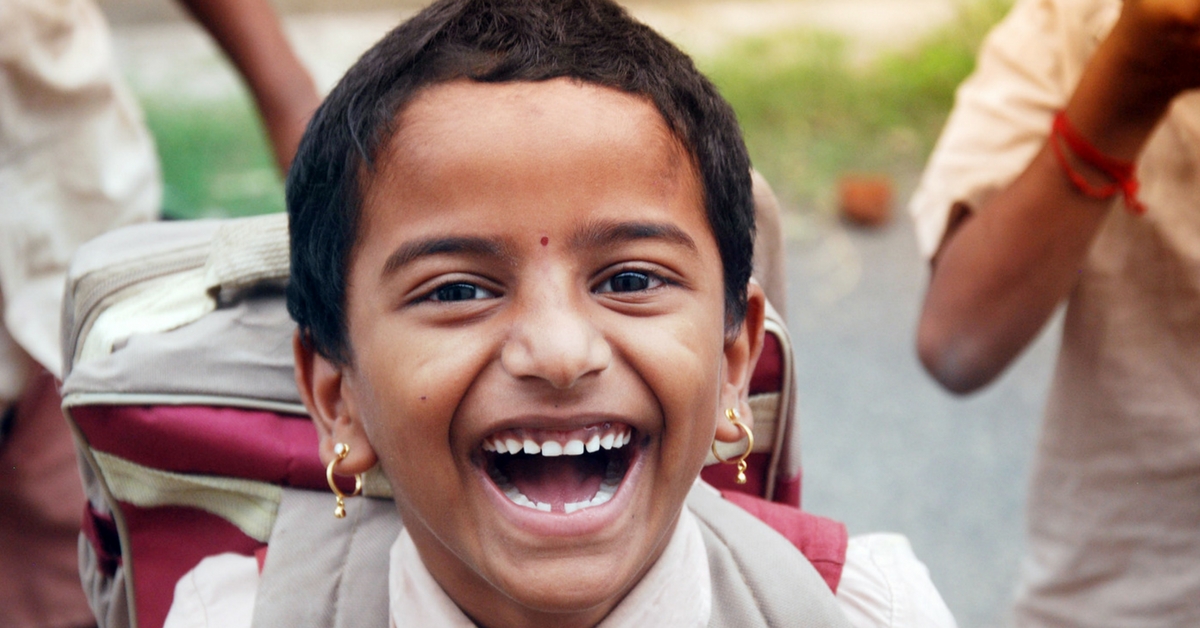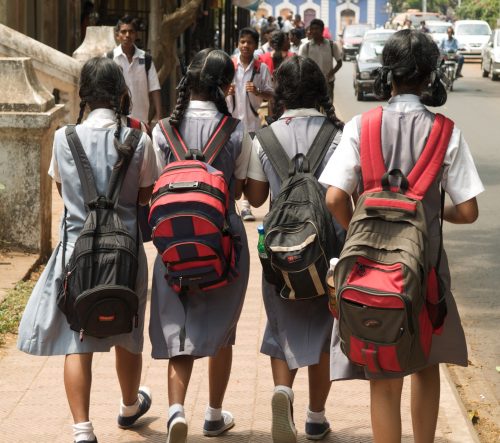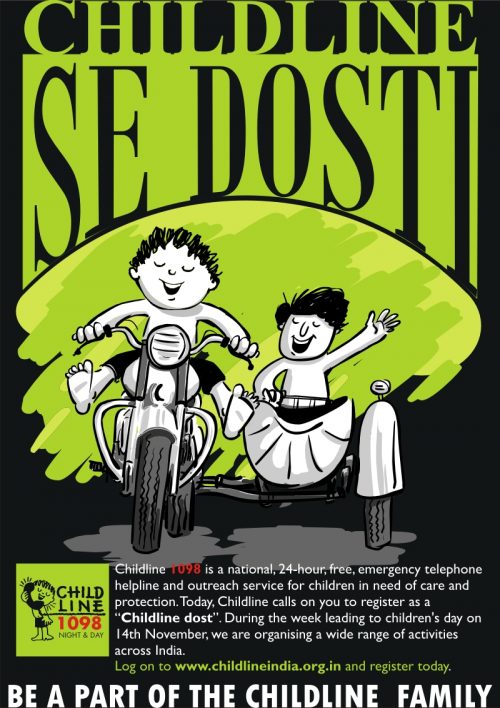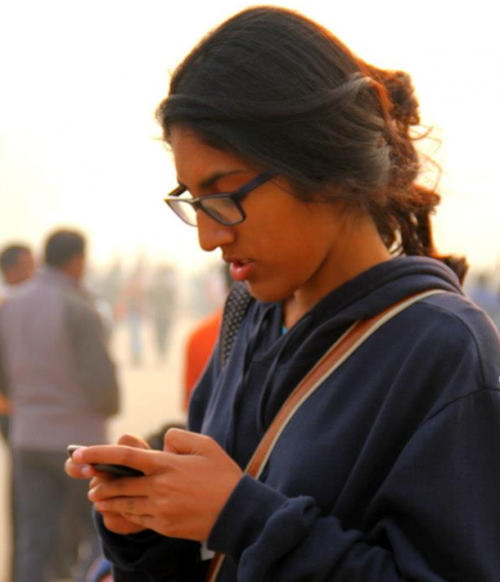Childline 1098: How the World’s Largest 24-Hour Children’s Helpline is Fighting Abuse
Child abuse in various forms is still an unfortunate problem in India. However, a couple of initiatives are seeing definite success in combating this twisted practice, including the Childline 1098 helpline.

Child abuse in various forms is still an unfortunate problem in India. However, a couple of initiatives are seeing definite success in combating this twisted practice, including the Childline 1098 helpline.
For months, Sunny, 14, would get thrashed by his teacher in a government school in Mumbai. Anything could trigger the violence – indiscipline, not running the teacher’s personal errands, even not attending his private coaching classes. Fed up, Sunny sought the help of a volunteer at a children’s activity centre, who directed him to call the Childline 1098. Within an hour, a team member from a field partner of Childline India Foundation, which runs the helpline, reached the centre.
After verifying the details of the abuse, she visited the school and, posing as a stranger, spoke to the principal about the erring teacher as well as the laws on corporal punishment and child abuse. A few more visits and a threat of legal action later, the school finally issued a warning to him. These days, a much-relieved Sunny is only too eager to tell his friends: “If anyone abuses you, just call 10-9-8”.
Childline 1098 is India’s first, and the world’s largest, 24-hour tele-helpline for children in distress. In 2014-15, around four million called in for help. Of these, 42,111 were requests for protection from various kinds of abuse. Sadly, high as these numbers are, this is just the tip of the iceberg, points out Tanvi Aher, Project Coordinator, Childline India Foundation.
“Some people report abuse directly to the police, government bodies like Child Welfare Committee (CWC), or contact other NGOs for intervention; a lot of abuse remains unreported, though,” she says.
Vidya Reddy, Co-founder of the Chennai-based Tulir- Centre for the Prevention and Healing of Child Sexual Abuse, agrees. In its research report Doesn’t Every Child Count? Research on Prevalence & Dynamics of Child Sexual Abuse Among School Going Children in Chennai, Tulir found that of the 2,011 school children surveyed, 939 respondents said they had been sexually abused at some point. Of these, only 360 ever sought help or disclosed the abuse. From those who sought help, an astounding 60 % never received any.
Instead, they were disbelieved, blamed, or told to keep it a secret.

This culture of silence usually comes in the way, and yet over the 12 years that she has been working in this field, Reddy has seen a definite uptick in the trend. “There has been a steady improvement in reporting statistics because of greater confidence in the system and increasing awareness of the need to make the perpetrator accountable,” she observes.
Reporting child sexual abuse is mandatory under the Protection of Children from Sexual Offences (POCSO) Act, 2012. Any case of abuse, sexual or otherwise, can be reported to the police, the CWC, or Childline 1098. Additionally, the National Commission for Protection of Child Rights (NCPCR) has launched the e-box service on its website in August 2016, which facilitates easy and confidential online reporting of sexual abuse. A call on 9868235077 during its office hours is another option.
Of these avenues, 1098 remains the preferred one, mainly because of the efficient structure it has in place. Childline, which intervenes on the entire gamut of child rights, currently operates in 366 cities in 24 states and union territories. It has a network of over 700 partner organisations across India and is supported and promoted by the Ministry of Women and Child Development, Government of India.
Calls made to 1098 are answered by a trained Contact Officer in one of its six call centres. A case report is generated and forwarded to the field partner in the city from where the call came. A member of the field partner contacts the affected child within one hour. Post intervention, the partner reports back to Childline. While the Childline makes every effort to remain accessible 24×7, there can sometimes be glitches.
For example, if staff of partner organisations are on leave, or if a call comes in very late at night, it may be impossible to send someone to the site. At peak times, some callers may be unable to connect. “To deal with this, we are now using cloud technology to put calls on hold or call back later,” says Aher. To cover its costs, the Childline has CSR alliances with telecom operators and technology partner TCS (for the call centres) that provide them services on a non-profit basis.
Space, technology, and manpower expenses are financed by the WCD ministry or through self-generated funds.

However, even as agencies grapple with the challenges surrounding child protection, another potent avenue for abuse has emerged – Internet and social media – confronting which demands a different set of responses, infrastructure, and manpower. Reddy reveals, “Every case of child sexual abuse we have handled in the last five years has had some technology input. Either pictures of the child are taken, or the child has been shown sexual content.”
Though organisations have not compiled actual numbers of online or mobile child abuse so far, there are some indications of what the future portends. UNICEF’s Child Online Protection in India report states that there are about 400 million internet users in India, a majority of which are young. In 2016, as per the country’s telecom regulator, countrywide mobile subscriptions crossed the one billion mark, and it expects that a major chunk of these will soon shift to smartphones to access internet. Many of them will be children. According to a survey commissioned by Intel Securities in India in 2015, 43 % of children active on social media said they had witnessed cruel behaviour, while 52 % admitted to having bullied people themselves.
“Despite our limited internet penetration and quality, Indians are among the top three consumers of porn in the world. People most search for the keyword term ‘teenagers’. There is a predilection towards the younger age group,” says Siddarth Pillai, Co-director and Communications Manager of Prerarna’s Aarambh initiative. It is easy to join the dots and gauge the potential for child abuse through technology.
Dr. Debarati Halder, Managing Director of Center for Cyber Victim Counselling, says, “Adult abusers slowly expose children to obscene activity. But sometimes, the perpetrators themselves may be children.”

Reporting of cyber abuse is unsatisfactory. Whereas small kids may not identify abuse, the older ones are usually too ashamed to reveal it to anyone. Parents are generally unaware of dangers online, or have little time to supervise the child’s online activity. So, even after discovering the child’s distress, they are reluctant to approach the police or other organisations because of guilt.
“There is law to prosecute cyber abuse, and child-related victimisation laws are getting better. But the complainant must take care to preserve evidence of abuse. On the contrary, there is a tendency to delete the incriminating content,” says Dr. Halder. She also observes that “we have few proactive mechanisms to trap offenders.”
The Aarambh India initiative, launched in September 2016 in collaboration with UK-based Internet Watch Foundation (IWF), is one. The online hotline to monitor and remove online child sexual imagery has received 70 calls a month since its operation. Users report sites on the Aarambh hotline. These sites go to the IWF where trained analysts examine them. Proof of child sexual imagery sends the site to a blocking list all major global tech groups subscribe to. The list blocks the site at URL level.
Naturally, setting up a vigilance centre takes huge investment. “This is currently not feasible in India. We are in touch with various government bodies and cyber cells to convince them about the need. In the public sphere, we will launch an awareness campaign about our hotline, so there is momentum,” says Pillai.
It, clearly, is going to be a long, hard battle.
Find out more about the Childline here. If you know a child in distress, or suffering abuse, report it to the Childline India Foundation here.
Featured Image is for representational purpose only. (Source: Pexels)
Like this story? Or have something to share? Write to us: [email protected], or connect with us on Facebook and Twitter.
NEW: Click here to get positive news on WhatsApp!
If you found our stories insightful, informative, or even just enjoyable, we invite you to consider making a voluntary payment to support the work we do at The Better India. Your contribution helps us continue producing quality content that educates, inspires, and drives positive change.
Choose one of the payment options below for your contribution-
By paying for the stories you value, you directly contribute to sustaining our efforts focused on making a difference in the world. Together, let's ensure that impactful stories continue to be told and shared, enriching lives and communities alike.
Thank you for your support. Here are some frequently asked questions you might find helpful to know why you are contributing?


This story made me
-
97
-
121
-
89
-
167














